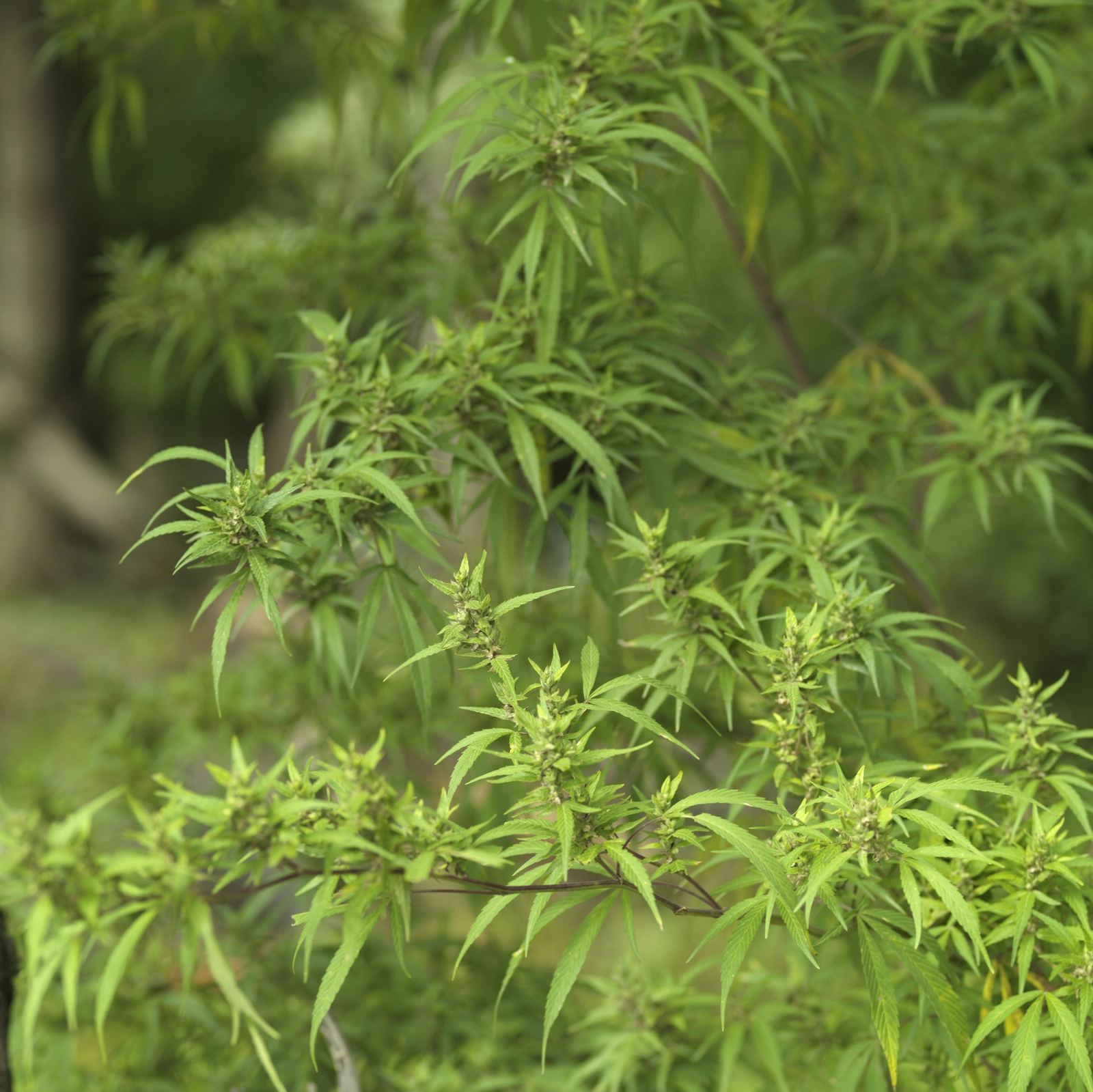Dabbing is a method of consuming marijuana in a concentrated form. Referred to as “dabs,” cannabis concentrates look like dark brown or yellow wax that’s sticky or gummy. Marijuana is dabbed by vaporizing concentrates on a hot surface and inhaling the fumes to get high tetrahydrocannabinol (THC) vapors.
Learn more about dabbing marijuana, its side effects, and possible risks.
Dabbing Meaning: What Is a Dab?
Butane hash oil (BHO) is the main extract used to dab marijuana. The concentrated form involves the use of butane, which is a flammable chemical that can be dangerous. The butane is removed, leaving a sticky, resinous dab that can contain 50% to 80% THC.[1] Regular marijuana is about 12% to 13% THC, so less of the substance is needed to get the same high.
BHO can be smoked through an oil pipe, water pipe, or glass bong. It’s also used in e-cigarettes or vaporizers to inhale the vapors. This offers a smoke-free, odorless way to use marijuana that’s easier to conceal than smoking a joint or blunt.
BHO can be added to food or drink, creating edibles. BHO makes it possible to ingest highly concentrated THC for a more potent high as well as intense side effects.
History of Dabbing
“Dabbing” can have several meanings. However, in drug culture, dabbin’ or dabbing originated as the act of heating a sticky oil or wax of concentrated THC extracted from cannabis and breathing in the vapors.[2] This has been the common meaning since around 2012, but it sometimes refers to a dance move often used in celebration.
Dabbing as a method of consuming THC vapors is relatively recent, becoming popular in the 21st century. Other dabs terms include butane hash oil, budder, crumble, shatter, and honey oil.
How Is Dabbing Done?
Dabbing usually involves a dab rig, which includes a water pipe and a titanium or ceramic nail. There’s also a dome and a torch. The nail is heated with the torch until it reaches a high temperature, and then the cannabis concentrate is placed on the hot nail. As the concentrate contacts the hot surface, it vaporizes, and you can inhale the vapor through the water pipe.
Effects and Risks of Dabbing
Dabbing has a much higher THC concentration, so its physical and psychological effects may be more severe. The paraphernalia for a dab is heated to temperatures higher than 400 degrees Celsius, which can cause burns or a fire if you come in contact with hot surfaces.[3] Depending on the materials used in dabbing equipment, you may inhale harmful chemicals or contaminants, which could pose health risks. BHO carries risks similar to other dangerous chemical extraction methods, such as burns and possible explosions due to using highly flammable substances like butane.[4]
There isn’t much research into the risks and side effects of dabs compared to any other method of using weed. The risks are not well understood, but there is evidence that dabbing may be linked to more injuries, accidents, falls, and loss of consciousness than other cannabis use.[5]
Why Is Dabbing Popular?
Dabbing has become popular as part of cannabis culture. It leads to rapid effects, creating a quick and intense high that can appeal to those looking for a fast-acting experience. It’s also viewed as more efficient and cost-effective than smoking cannabis because the concentrated form requires a small amount of the substance.
Like other methods, cannabis concentrates offer diverse taste and smell profiles that can lead people to experiment with different types of concentrates. This variety can enhance the experience and allow people to find more enjoyment in the flavors, textures, and effects.
Dabbing Abuse and Addiction
Dabbing can cause higher tolerance and withdrawal than other marijuana use.[6] In addition, this method is popular among teens because it’s inconspicuous, but the effects of cannabis can increase the risk of psychosis and negatively affect brain development.
If you dab weed often, you may become dependent on it. This means your body and brain have become accustomed to the presence of the drug and require it to function. If you stop suddenly, marijuana withdrawal may occur. The symptoms of cannabis withdrawal may include:[7]
- Irritability
- Restlessness
- Anxiety
- Changes in appetite
- Insomnia
- Fatigue
- Depression
- Sweating
- Fever
- Headache
- Stomach pain
- Shaking
Treating Marijuana Addiction

Some people view weed as a harmless, natural drug that can’t cause addiction. As a result, many people may abuse or become addicted to weed without realizing it – and without seeking help.
According to the Centers for Disease Control and Prevention (CDC), cannabis is the most commonly used federally illegal drug in the US. 52.5 million people, or about 19% of Americans, used marijuana at least once in 2021.[8] Approximately 3 in 10 people who use cannabis have marijuana addiction, and the risk is increased if there’s regular use before the age of 18.[9]
Cannabis use disorder, the official name for cannabis addiction, is outlined in the Diagnostic and Statistical Manual of Mental Disorders (DSM-5). The criteria include:[10]
- Unsuccessful attempts to stop or cut back on cannabis use
- Using cannabis in larger amounts or more frequently than intended
- Craving cannabis
- Spending a lot of time getting, using, or recovering from cannabis
- Failing to fulfill important responsibilities at school, work, or home because of cannabis use
- Using cannabis in dangerous situations
- Continuing to use cannabis despite problems in relationships
- Stopping other activities because of cannabis use
Marijuana addiction can be difficult to overcome, but you can with help. Comprehensive cannabis addiction treatment that addresses the physical, emotional, and psychological aspects of addiction can help you get on the path to recovery.
Though marijuana withdrawal isn’t as severe as “harder” drugs like heroin or alcohol, it can be difficult to manage on your own. Medical detox is often used to get through the withdrawal period with medical supervision and support, including medications to manage unpleasant symptoms like insomnia or anxiety.
Detox can help, but it’s not enough on its own. Once detox is complete, it’s crucial to enter an addiction treatment program that’s personalized to your needs. Whether inpatient or outpatient, treatment may include individual therapy, group counseling, support groups, and behavioral therapies to help you understand the root causes of addiction and learn healthier habits.
Know the Risks of Dabbing
Marijuana use is normalized and legal in many places, but it’s not without risks. Dabbing, which involves inhaling the vapors from heated concentrates, carries many additional risks, including severe health effects and associated dangers like burns from the dabbing process. If you’re abusing marijuana using dabbing, it’s important to get help as soon as possible.


